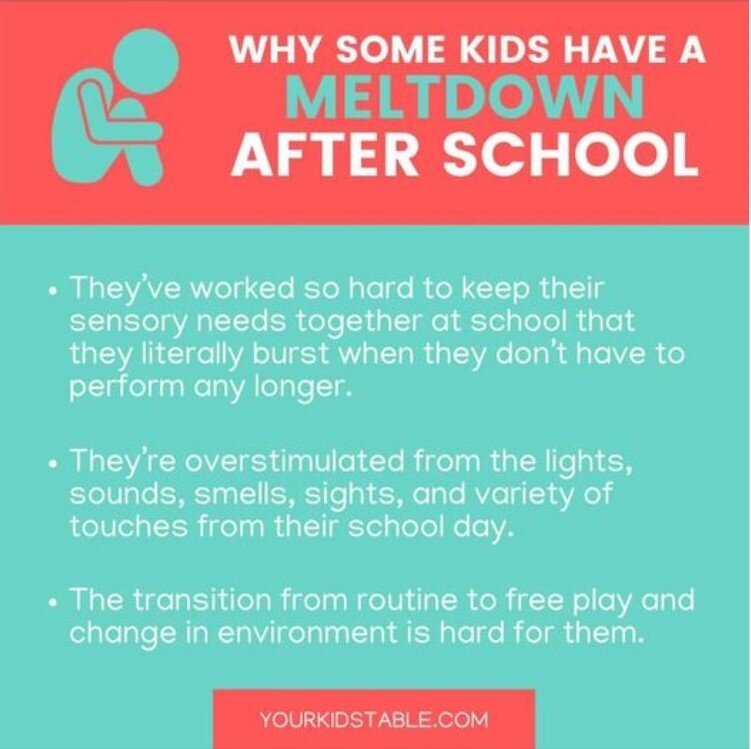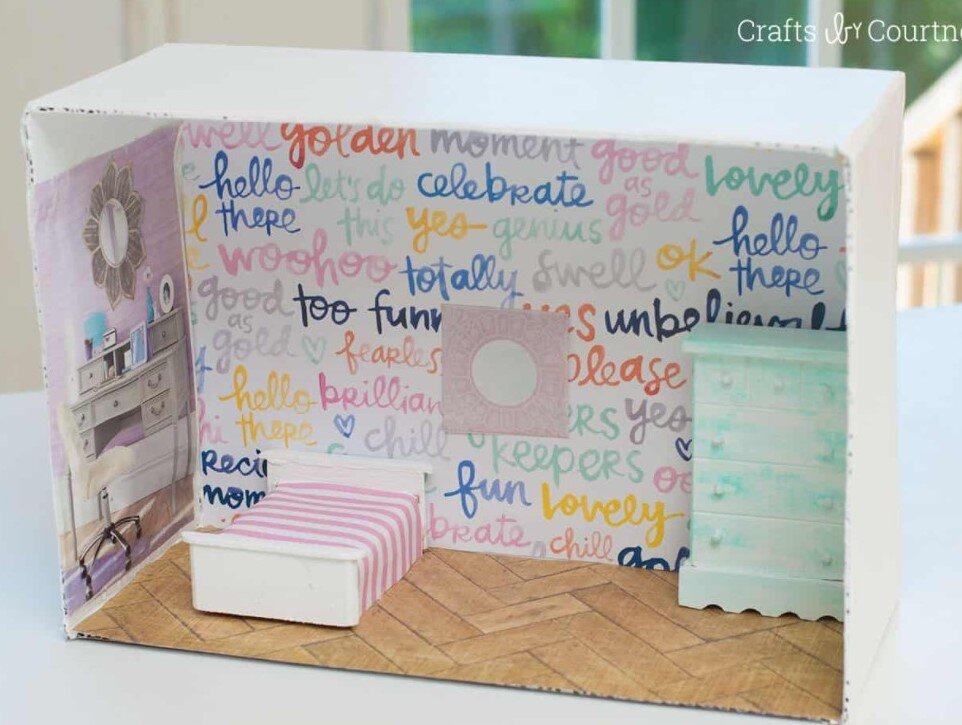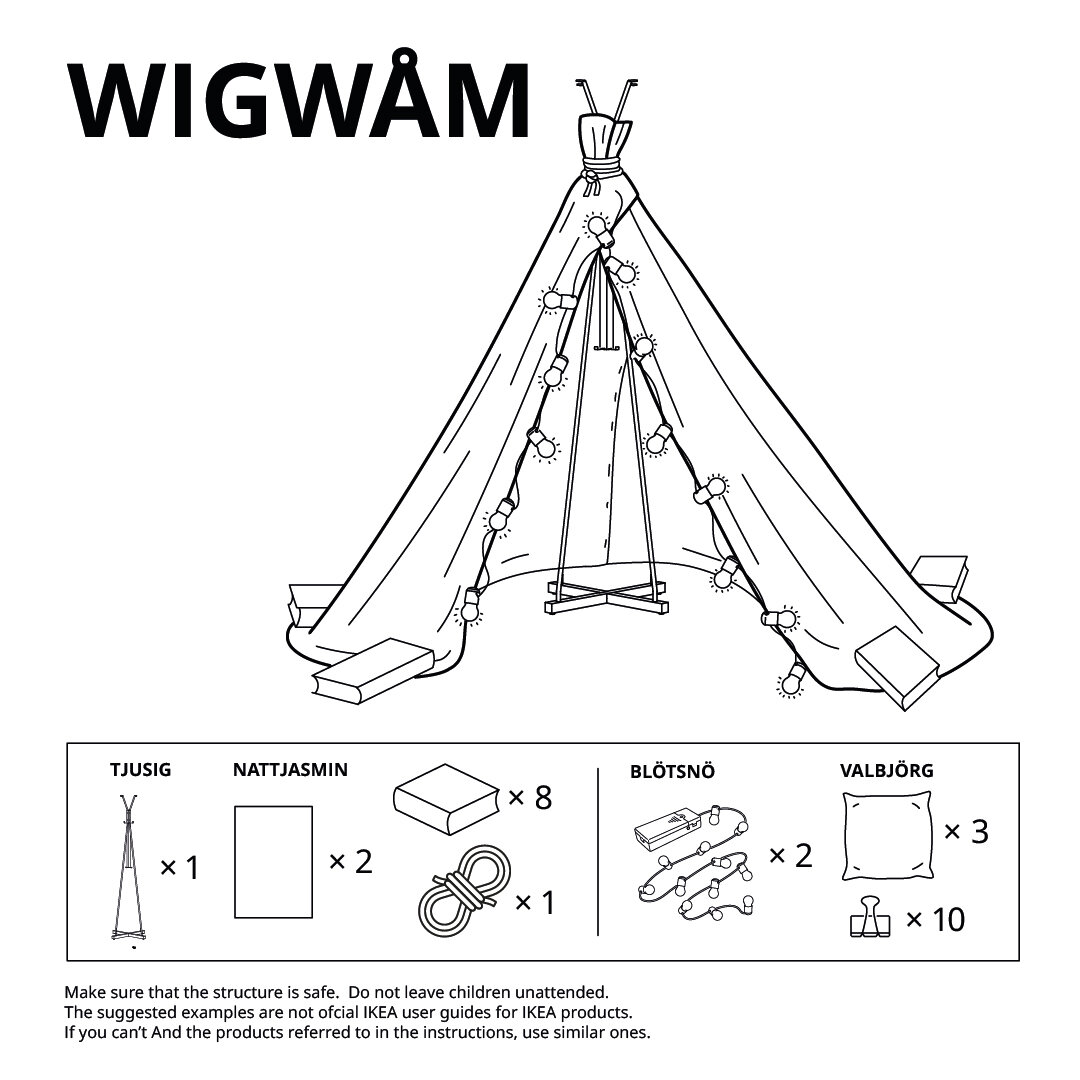Another school year is now underway. Summer routines must adjust to the requirements of school schedules with hours spent away from home surrounded by teachers, other kids and school rules. For many children, particularly those with identified ADHD or ASD challenges, the transitional points of the day, particularly the return home, pose a reoccurring and dramatic punctuation to the day. If you find this to be the case for a child you love, this is a post for you.
www.yourkidstable.com
After School Meltdowns don’t look the same for every child. Some will “explode” as soon as they arrive home, complete with yelling, violent outbursts, physical aggression and refusal to calm down. Others will implode. I had one student, a 6th grader just starting his first year of middle school, who secluded himself in his clothes closet and refused to talk to anyone or come out until dinner time. Others will exhibit more subtle behaviors that are no less concerning for the family, with mood swings, lack of affect, refusal to eat, play with siblings or friends, “exploding” when it is time to do homework or get ready for bed.
Since this is perceived by the family as a change in the child’s usual behavior, most parents will begin to hypothesize that something is “going on” at school to cause this change. They are often surprised that the teachers report excellent behavior in the school setting, with established positive peer relationships, schoolwork completion and academic progress. This can cause a breakdown in trust between the school team and the family, particularly when this pattern shows up in the later elementary and middle school years with students who had been making anticipated yearly progress working with previous IEP or 504 Planning teams. It is not illogical to look to the change in setting, educational team or peer group as a root cause. Once this is ruled out through data collection and an honest and open discussion it is time to look to the next likely possibility.
Experienced educators have a name for this phenomenon: After-School Restraint Collapse. Think of it this way. How long can you hold your breath? A minute or two? How long can you hold your stomach muscles in before gravity takes over? 15 minutes? An hour? This is what it feels like for kids with ADD/ASD/ Social Anxiety as they cope with the consistent stress of controlling your emotions throughout the school day. Especially in the high pressure world of school, where it isn’t only the adults you need to please, but your peer group who never forget what happened last year in PE, not to mention this morning. in Math class. Once the child returns to the safe environment of home the dam will break and the motional river will overflow. While for some this pattern will lessen and disappear as time goes by and a new routine is established, for others it does not.
So, now that you and the school team have ruled out external factors such as bullying, what comes next?
The first step is to identify those factors that your child faces during a typical school day . While these expectations may vary by school setting or grade level, just a glance at this list will remind you of the stressors present in a typical school program:
Have a structured time for eating and playing
Go to the toilet only during break times
Play by the rules: must stay in designated areas, only run on grass, can’t touch other children, or climb on everything they may want to.
Put their hand up to speak, and will not always be called upon by the teacher even if they know the correct answer
Sit still for long periods of time at a desk or on the floor
Wear closed-in shoes all day long
Behave a certain way as outlined by the teacher, even if they are not sure exactly why they have to behave that certain way
Remember and follow all classroom and school rules
Manage disappointments and setbacks without Mum or Dad present
Understand and learn to interact with older children
Cooperate with their peers, even though there may be some children they don’t like
Sometimes they must work with children who can behave irrationally or in an unexpected manner e.g. by saying something unkind, touching their belongings, interrupting their concentration, or even physically hurting them
Be expected to calm down after an exciting or upsetting event to focus on school work
Concentrate on multiple tasks throughout the day from a range of different learning areas
Follow directions from several different adults (who in the eyes of the child can unexpectedly talk sternly towards them at any time)
Be expected to work under a variety of classroom and environmental conditions
Your child may be able to help you identify the parts of his day that are causing him the greatest difficulty. Once identified, it may be possible for the school team to assist him by adjusting the schedule. For example by allowing more bathroom breaks or by providing him with alternative seating such as a wiggle chair. Younger children may not be able to verbalize where the difficulty lay. They often say things like, “The teacher doesn’t like me” or “The kids hate me”. Remember this is the emotion speaking, Here is where classroom data can help determine what accommodations, if any, are candidates for a trial run and the effectiveness of any particular accommodation over time.
Older students in particular, may balk at any suggestion of accommodation, wanting to fit in, and not stand out in anyway from their peers. They may have already learned to control their reactions during the school day, successfully concealing their difficulty from teacher and peers. So, then what can a parent do at home?
Photo by Jeswin Thomas on Unsplash
Kaylene at Autistic Mama has a three step approach to home management of after school melt-downs.
#1 A Preferred Calming Activity.
This activity will vary from child to child and family to family. Some suggestions include listening to music, watching a favorite video, listening to a podcast, or perhaps a calming fidget toy. (Personal note: When she was in middle-school my daughter loved to lie down with a cool washcloth on her forehead for a few minutes as she listened to an audio book . We called it “spa time”. She didn’t need it everyday, but it was always available to her when she did need it.) Whatever works for your child to give him time to calm himself, rest and recover to make the transition from school to home.
#2 Meet Basic Needs
Make it a habit to get comfy when you arrive home. An after school snack, a nice cold or warm drink, alone time in the bathroom to wash-up, and change clothes. These are all transition activities we humans enjoy. There is no great rush to get homework done. It can wait for an hour or so. (A shared snack or glass of milk is also a great conversation opener to talk about the ups and downs of the day. )
#3 A Sensory Strategy
Kaylene recommends that you take a few minutes for a sensory activity before jumping into homework or other evening tasks. This can be very effective for all children, even those not identified as ADHD or ASD. A brief snuggle in a warm, weighted blanket as you review the homework assignments together may ease the start of homework time. The idea here is to set up a transition to the next step in the evening: getting homework done. Some kids enjoy a rhythmic “hobby” like weaving or a rhythmic exercise such as yoga to allow them to focus on the next task. Its worth the effort if it avoids a melt down.
I would add one more consideration. Examine your child’s weekly schedule to be sure that he is not over-loaded with activities. Everyone need some “down time”. Make sure that on those days that he is scheduled for ball practice or scouting he also has time for at least #s 1 and 2 on Kaylene’s list to ease the multiple transitions from school to home to after-school activity.
For more ideas about how to handle home-schooling, homework, and after-school activities take a look at these blog posts:
Music-and-Sports-and-Art-Lessons-Oh-My! how-to-avoid-over-scheduling-your-child
Back-to-School-or-Back-to-the-Kitchen-Table-planning-for-your-childs-education-in-a-time-of-pandemic








































